Every few months, there's another furore online when someone spots an anti-rape poster in a hospital or police station and shares it online, accusing it of victim-blaming.
Those opposed to such adverts claim they often imply the victim is at fault for drinking too much, for instance. For particularly unpopular posters, petitions are sometimes set up calling for their removal.
More often than not, however, the police forces and health agencies behind the adverts are quick to distance themselves from them in the face of criticism. A common response is to stress that "it's an old poster" and sometimes claim they can no longer be held responsible for any potential negative message conveyed.
But what happens after the initial furore is over? How should the people behind the posters understand if they've made mistakes and implement changes for future designs? And what about the posters that do convey the right message – can other agencies take note and learn from them?
BuzzFeed News asked Katie Russell, a media expert from the charity Rape Crisis who deals with the issue on a daily basis and understands the complexities around victim-blaming, for her opinion on 14 anti-rape posters and whether she thinks they're effective or not.
1.
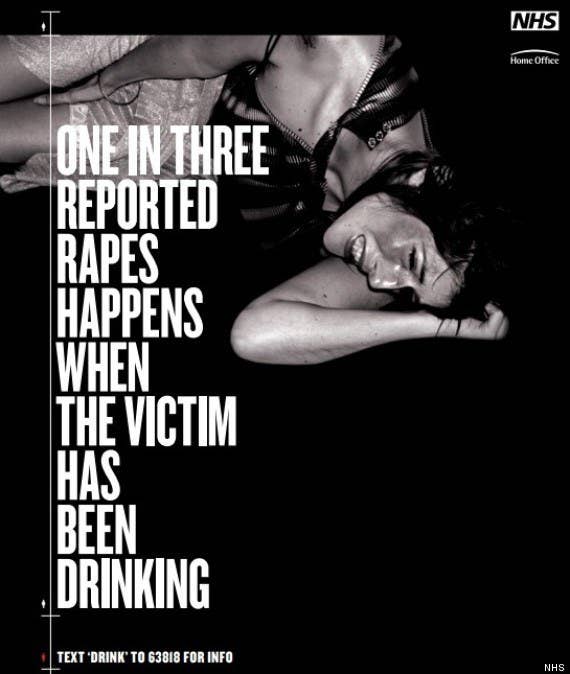
Who was behind this poster?
The Department of Health
When did it run?
2005–2007
Many surgeries and clinics are still displaying this poster. After more than 40,000 people signed a petition calling for it to be removed, the Department of Health said in a statement: "This campaign is no longer used. Posters have not been in stock, or available on websites for several years."
Katie Russell, Rape Crisis:
"The image used here is intentionally distressing and could be upsetting and trigger flashbacks in anyone who's survived rape or sexual assault in the past. The response that springs to mind to this statistic, presented as objective 'fact' but in reality laden with value judgment about women's behaviour, is: 'Three in three rapes happen when the rapist chooses to rape someone.'"
2.
Friends who play together, stay together. On a night out don’t let your mates leave with a stranger or go off alone.
Who was behind this poster?
Sussex police
When did it run?
Early 2015
Sussex police chief inspector Katy Woolford said in a statement: "It is vital to be aware of vulnerability so that steps can be taken to guard against it. Friends and bystanders can play a key role in this, learning to recognise where their intervention may prevent a crime taking place."
Katie Russell, Rape Crisis:
"Clearly, advising young people to stick together on a night out is reasonable for a range of health and safety reasons. This poster has just been poorly put together in a way that implies that if your friend is sexually assaulted when they started the evening with you, it's your fault. Again, the statement 'many sexual assaults could be prevented' is true: All sexual assaults could be prevented if the perpetrators chose not to sexually assault someone."
3.

Who was behind this poster?
Calderdale council, West Yorkshire
When did it run?
2013
The poster was part of a set of four that were distributed to more than 700 pubs, clubs, and health centres.
Katie Russell, Rape Crisis:
"This one doesn't make as clear a reference to sexual violence as some of the others and, again, the message to drink alcohol in moderation is a sensible one for a range of reasons. But a woman is depicted on the poster, and, if we do interpret the message as being about risk of sexual violence, it misses the key point that if someone has 'lost control' then they're not legally capable of giving their consent to sex.
"A more relevant message here, and one arguably more effectively aimed at prevention, would be: 'If someone is in this kind of state, they can't give you their free and full consent, so sexual activity with them would be a serious crime for which you will be punished.'"
4.
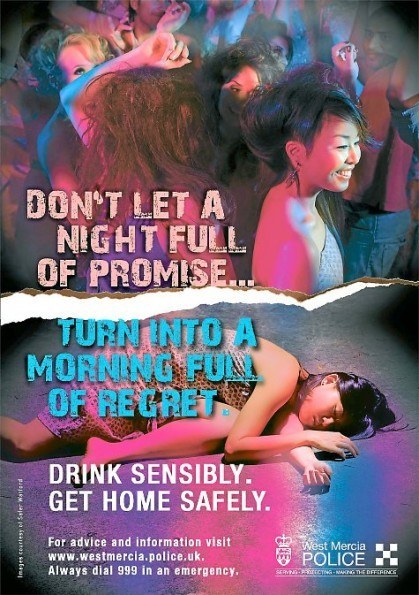
Who was behind this poster?
West Mercia police
When did it run?
2012
Detective superintendent Ivan Powel of the West Mercia police said in a statement: "I understand there have been some concerns about the nature of the poster but I would stress what we are trying to do here is putting information out showing potential victims how to avoid becoming vulnerable."
Katie Russell, Rape Crisis:
"This one is not explicitly solely about sexual violence but the fact that the person depicted is a young woman, and her pose in the second image, both imply it. If it's about getting so drunk that you fall over and/or pass out, that's arguably something you would regret; if it's about being raped or sexually assaulted while drunk, 'regret' is completely the wrong word, as it implies culpability. Survivors of sexual violence struggle enough with feelings of shame and self-blame without this kind of message from authorities. Survivors have no reason to feel guilty or regretful; those are emotions we should be trying to evoke in rapists."
5.
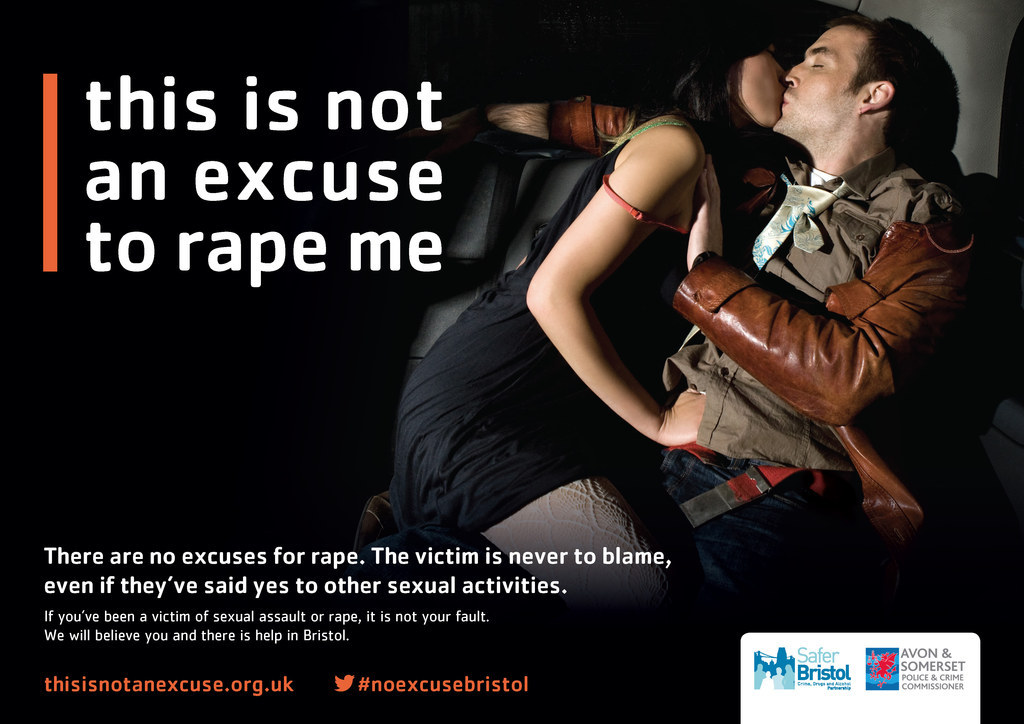
Who was behind the poster? This Is Not an Excuse campaign, run by a number of local Bristol charities and agencies
When did it run?
Late 2014
Katie Russell, Rape Crisis: "This one brilliantly and clearly lays the responsibility for rape where is belongs – fully with the perpetrator – and hammers home that there are no excuses or mitigating circumstances when it comes to sexual violence. It also has the real potential to make a potential perpetrator think twice about his behaviour; some men do believe that this level of consensual activity is automatic consent to sex, even if the woman subsequently makes clear she doesn't want to go any further."
6.
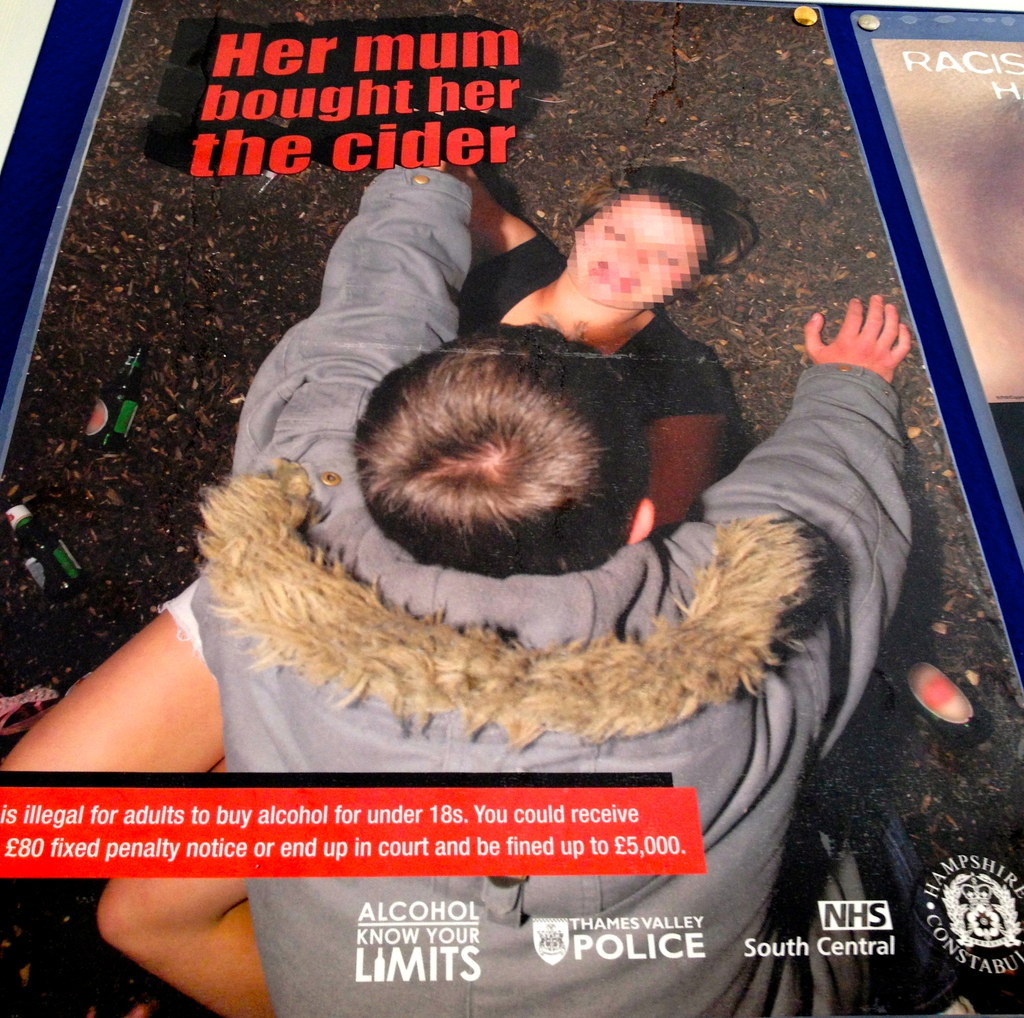
Who was behind the poster?
Thames Valley police, Oxford
When did it run?
2012
Katie Russell, Rape Crisis: "I find the image on this one a bit confusing and difficult to interpret but it seems like just another attempt to find anyone other than the perpetrator to blame for violence against women and girls and sexual violence. If it's not the victim's fault, it's her friends' fault, or if not their fault then her mother's; while this poster is apparently aimed at parents, it would be an confusing message for young people to see. A more useful one for impressionable young boys, for example, might be: 'If a teenage girl is really drunk on cider, regardless of where she got it from, she probably can't give you her consent so having sex with her would be rape.'
7.

Who was behind the poster?
Pennsylvania Liquor Control Board, United States
When did it run?
2011
Katie Russell, Rape Crisis:
"The message here is bluntly and quite shockingly victim-blaming. It effectively claims that a woman drinking too much is a direct cause of rape, when the truth is that the only direct cause of rape is the rapist's behaviour. The image could also potentially be very distressing and triggering for any survivor of sexual violence who saw this.
"Going home with someone who you don't know very well isn't an inherently 'bad decision' and certainly isn't the worst decision implied by this scenario; the bad decision here was clearly made by the man who decided to have sex with a woman so drunk she was unable to speak. It was his responsibility to seek consent and be confident he'd received it, and if he was in any doubt he should have left her alone."
8.
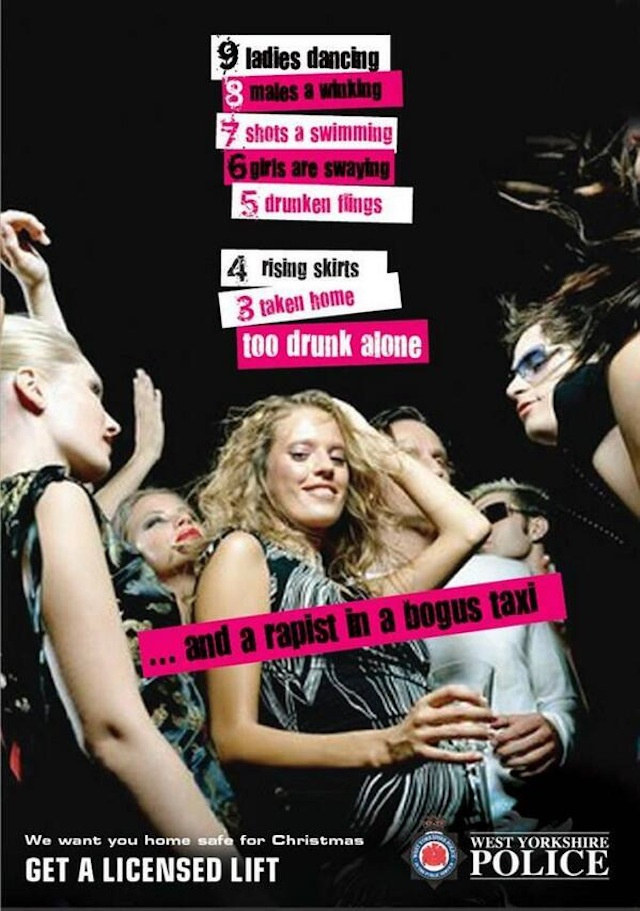
Who was behind the poster?
West Yorkshire police
When did it run?
2013
Katie Russell, Rape Crisis: "This poster is particularly poor taste because of the attempt to make it amusing or 'festive' by setting it to the tune of a Christmas carol. Again, the focus is entirely on the behaviour of the women or girls in a social setting where most people are drinking alcohol, with no reference to the responsibility men might have in the scenario, and the 'lyrics' even manage to imply, albeit probably unintentionally, that behaviour like 'ladies dancing' is a contributing factor to sexual violence."
9.

Who was behind the poster?
I Know Someone campaign, Sexual Assault Centre London
When did it run?
Campaign began in 2010, poster spotted early 2015.
Katie Russell, Rape Crisis:
"It's not completely clear who the message is directed towards here but I think it might be intending to address the potential perpetrator when it says 'respect your friends, respect yourself' and, if so, that's a positive thing. 'Recognise sexual violence' also seems to be gesturing towards the myth that rape and sexual assault are always perpetrated by violent strangers and trying to debunk it. It is a bit muddled though. It might be trying to say too much on one poster."
10.

Who was behind the poster?
Cabwise, Transport for London
When did it run?
2010
Katie Russell, Rape Crisis:
"This is an horrendously harrowing, triggering image that I remember being appalled by when I saw it on the London underground; I'm sure thousands of survivors who will inevitably have seen it will have been too, not to mention the ones who had flashbacks etc. There must be less victim-blaming and scaremongering ways to get the message across that we should only use licensed taxis."
11.
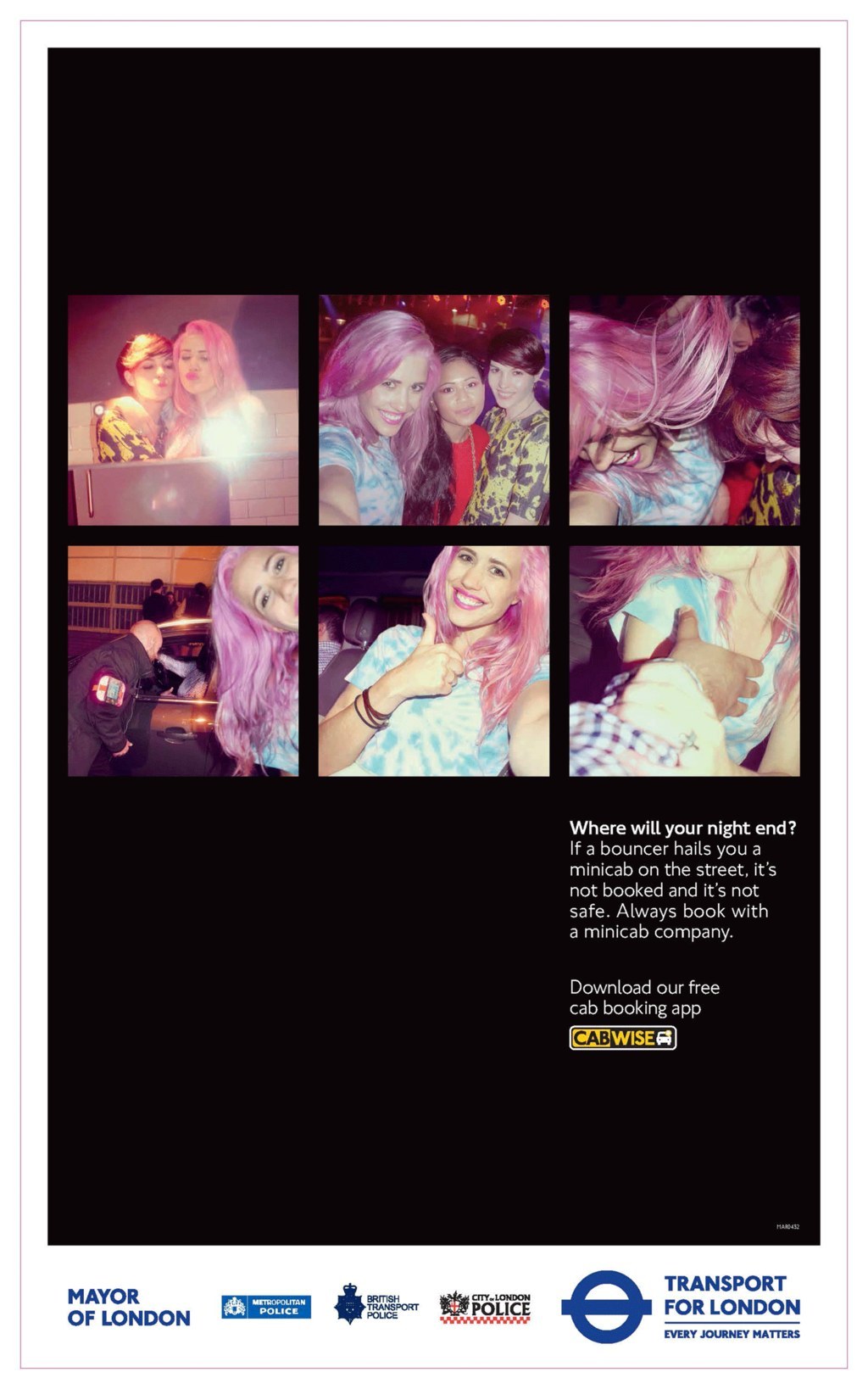
Who was behind the poster?
Transport for London
When did it run?
Late 2014
TfL hoped that the campaign would "tap into the trend of friends and particularly young women texting each other to say they are home safe".
Katie Russell, Rape Crisis:
"This is marginally less distressing than the previous minicab one, but still disturbing. There must be a way to warn about the dangers of unlicensed cabs without implying it's a woman's fault if she's assaulted in one."
12.

Who was behind the poster?
Missoula's Intervention in Action Project
When did it run?
2013
Katie Russell, Rape Crisis:
"This campaign looks like an attempt to appeal to men using male messengers, which could well be effective. It cleverly draws your attention in with slogans that sound like sexist clichés too. It is aimed at interveners/bystanders as 'allies' in the fight against violence against women though, rather than the perpetrators themselves, but for what it seems intended to do, I think it's powerful."
13.
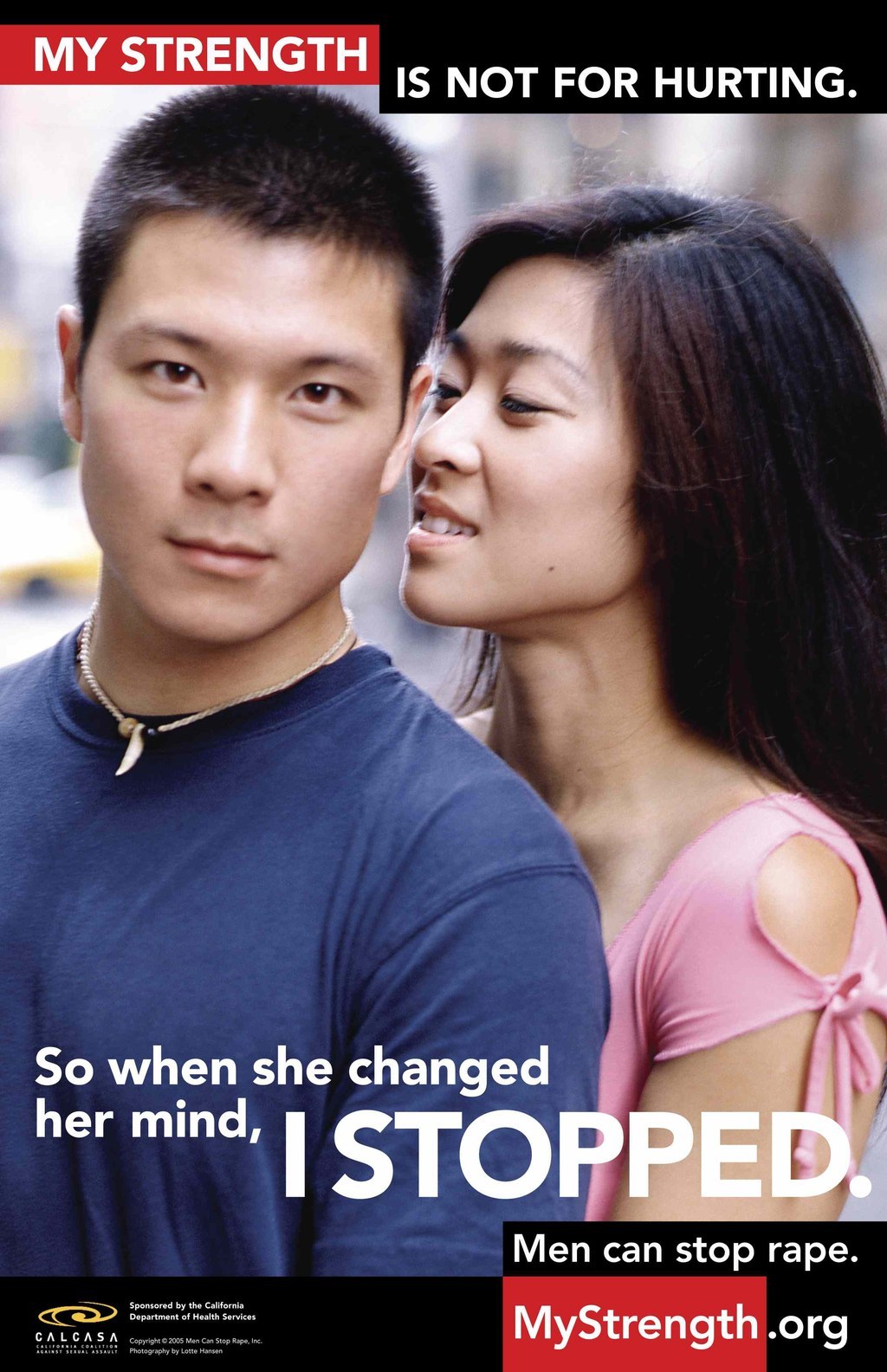
Who was behind the poster?
California Coalition Against Sexual Assault.
When did it run?
2005–today
Katie Russell, Rape Crisis:
"This has a nice, clear message, addressed from one man to others. 'Men can stop rape' is pretty much what it bubbles down to."
14.
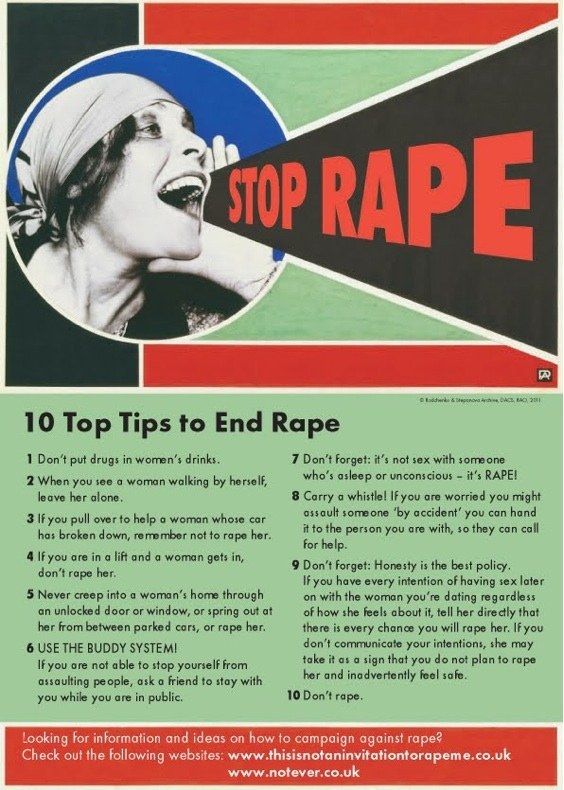
Who was behind this poster?
When did it run?
It's been shared widely on social media for several years.
Katie Russell, Rape Crisis:
"I like this a lot because it parodies the all-too-familiar safety messages aimed at women 'keeping themselves safe' and exposes the futility and indeed ridiculousness of trying to prevent a crime as serious as rape by focusing on potential victims rather than the only people with any real power to end it, that is, the rapists (and potential rapists). It obviously requires a fair amount of reading, though, and I can imagine some people would find it distasteful that it is intentionally so funny, perhaps misinterpreting it as 'making light of' or 'joking' about sexual violence."
